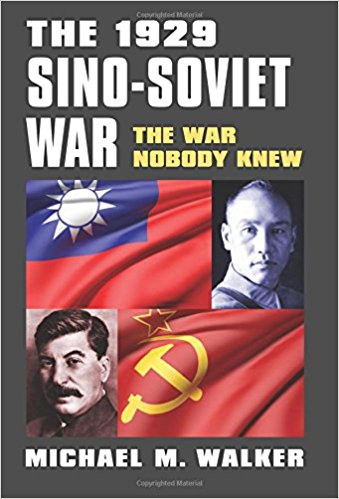Congratulations to Michael Walker on his assiduous research and lucid manuscript about this seminal 1929 conflict between the Republic of China and the Union of Soviet Socialist Republics (USSR) over control of the China Eastern Railroad (CER). The CER runs through Chinese Manchuria and links the Russian Far East city Chit with Vladivostok. This railroad spur is a shortcut of about 1,200 miles between these two cities on the northern loop of the Trans-Siberian Railroad that skirts Manchuria. If you study a map of this area, you will understand why both its economic and its military value have been apparent to Imperial Russia, the USSR, Russia, and China.
In 1896, after the first Sino-Japanese War, 1894–1895, the Chinese Qing dynasty was weak and adrift under the inept leadership of the Empress Dowager Tz’u His. Under intense Russian pressure, the Qing government granted a concession to Czar Nicholas II of Imperial Russia to construct the CER through northern Manchuria. Work began on the CER in July 1897. The contract provisions provided for dual control by the USSR and Imperial China, and for employment of Chinese executives and workers.
A large Russian army occupied Northern Manchuria to control the CER and protect it from bandit raids and Japanese incursions. The Japanese were gravely concerned that Russia was appropriating their sphere of influence; this led in large measure to the Russo-Japanese war of 1904–1905.
Freight traffic on the CER line started in November 1901, and regular passenger traffic from St. Petersburg to Vladivostok across the Trans-Siberian railway and the CER began in July 1903.
Problems of ownership of the CER and its operations festered for years.. In July 1919, the Soviets promised to return the CER to Chinese control without compensation. The Soviets had laid the foundation for a double-cross to regain complete control of the CER and its auxiliary lines. In 1924, the Soviets, under the reign of Joseph Stalin, reneged, and began a campaign of subterfuge to get rid of all Chinese control and interest in the CER. The Soviet Comintern spread Marxist agitprop among the Chinese executives and workers, led strikes, and encouraged sabotage. In the ensuing years, the controversy escalated.
In 1929, Generalissimo Chang Kai-shek’s Kuomintang government in Nanking was weak and controlled only about fifty percent of the land area of China. A collage of warlords controlled the remainder. The powerful warlord Chang Hsuch-liang (Wade-Giles spelling), the leader of the Fengtian clique, governed Manchuria with a large, well-trained, and well-armed modern army
The Soviets intensified their perfidious campaign with wide-ranging agitations, purloining of CER funds, and assassinations. In turn, Chang began retaliation activities including the kidnapping of Soviet CER executives—leading to his goal of a forced hostile takeover. Realizing that armed conflict with the USSR was inevitable, Chang Hsuch-liang pledged his army and his loyalty to the Kuomintang government in Nanking. In turn, Chang Kai-shek pledged what support he could. Warlords in other cliques also offered backing.
The armed conflict started slowly in the summer of 1929 with skirmishes along the Amur and Songhua Rivers. The first battle started on 17 August 1929, when the Soviets attacked Chalainor. Chang’s troops retreated to a heavily armed trench line. The Soviets advanced into a killing zone, and suffered heavy losses. Following that, the Chinese troops fought a valiant and bloody defensive campaign. However, by late November, the USSR’s overwhelming military power forced the Chinese to sign a treaty on Soviet terms on 13 December 1929.
The most serious negative I find with Walker’s narrative is the absence of a series of small-scale maps to detail the conflict areas and include the many geographical names mentioned in his text.
Note. The USSR conceded ownership of the Chinese Eastern Railway to the People’s Republic of China in 1952.
Read more by S. Martin Shelton!

People seem to forget this ever happened!
The wars of the early 20th Century never stopped.
The wars of the early 20th Century were continuous.